Inspired by Yvonne Chouinard and Doug Tompkins' legendary trip to Patagonia that jumpstarted their own philanthropic journeys, Tommy set out to push his physical limits and build his own relationship with nature over a 2800 mile self-supported trek from Estes Park, Colorado to Tongass National Park, Alaska.
Traveling mainly by bike (but also by foot and sailboat), Tommy set out with his close friend and climbing partner Alex Honnold from June 28th to August 25th. This is the story of Tommy Caldwell's trans-continental journey and what he experienced along the way.
Watch: COROS VERTIX 2
Accessory: COROS Heart Rate Monitor
Analysis Tool: COROS Training Hub
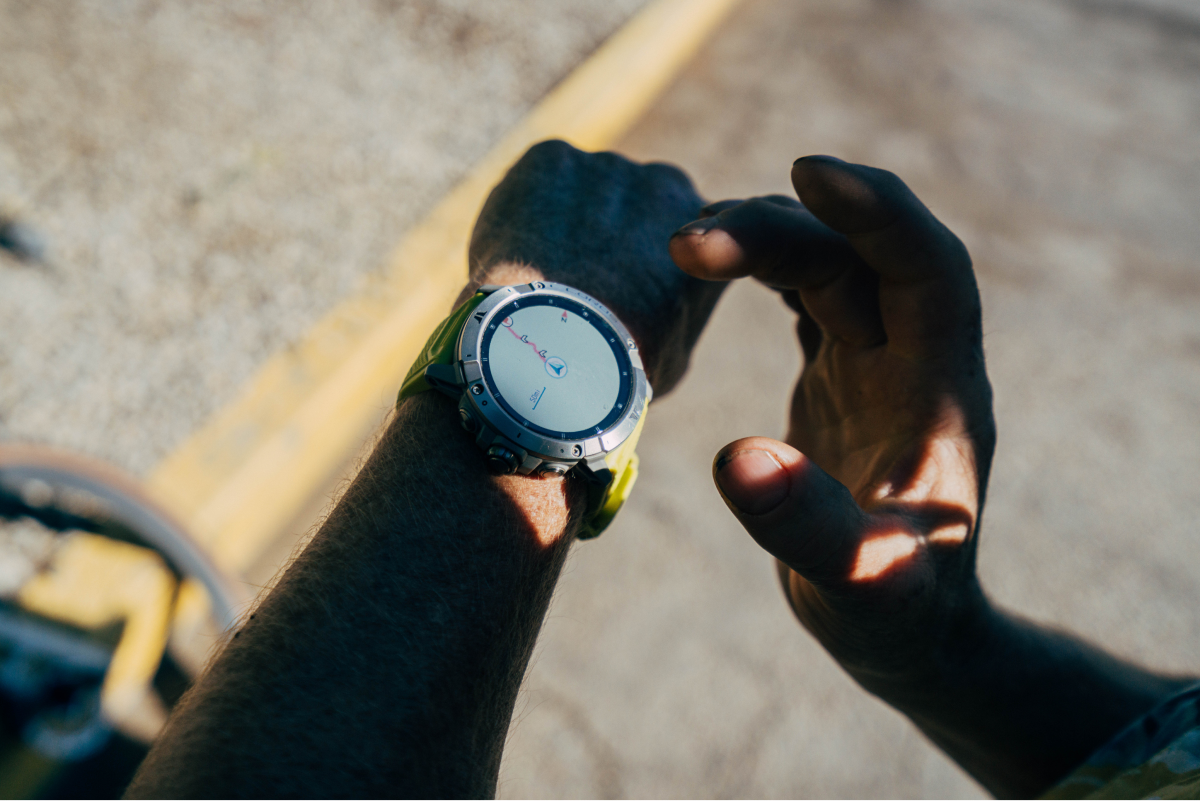
Inspiration for the Adventure
Given his lifelong passion for nature and the environment, Tommy often looks to explore places that are under threat due to the ever-changing state of our climate and environment. Having learned about the environmental dangers to Tongass National Park through his work with Patagonia, Tommy was eager to explore climbing routes in this region along with other iconic venues along the way.
Situated in the remote regions of southern Alaska, this iconic climbing destination is often only reached by helicopter. However, with Tommy's sustainable mindset, he wanted to plan a more eco-friendly approach to seeing the beauty that this region had to offer.
I wanted to plan a lower carbon adventure. I always liked the idea of doing a long bike tour. And I had some other climbs I wanted to do this summer as well. So, I decided to put together this trip where I biked between all the climbing areas and learn about the forest along the way.
While Tommy's focus was clearly on sustainability, he also knew his more organic approach would help him better connect with nature and further expose its wonder.
I was hoping that if we fully immersed ourselves in a deeply exciting and memorable journey, with a mindset of finding our role in caring for the places we travel through, we could inspire ourselves and others to look for ways to live more sustainably. Traveling through landscapes more slowly allows you to better understand the impacts humans have.
With a clear goal of inspiring both himself and others to be better stewards of our planet, Tommy and Alex made a plan to set off from his home in Estes Park, Colorado on June 28th, 2023.
Preparation: Training for a 2800 Mile, Multi-Month Expedition
Knowing the toll this expedition would place on his body, Tommy had to put in a robust training block in the months leading up to this expedition.
Generally, I climb full time and ride my mountain bike 3-10 hours a week. For the past several years I have done a handful of full day rides per year. As training for this trip I approximately doubled the daily routine, then added a few 100-mile rides just to make sure my body was holding up and I was getting the calorie intake right.
Having suffered an achilles injury 6-months prior to this journey, Tommy relied on cycling for his fitness training which would put less overall pressure on his recovering tendon. Paying close attention to his endurance metrics within the COROS EvoLab, Tommy began to dial in his approach to fitness and recovery.
COROS really helped me learn about my training zones and how important pacing was. I found that if I mostly kept my pace in Zone 1 and 2, I was able to maintain energy day after day. The sleep monitoring helped me understand how important sleep is and how I need to prioritize it. And I liked using the HRV to double check my fatigue.
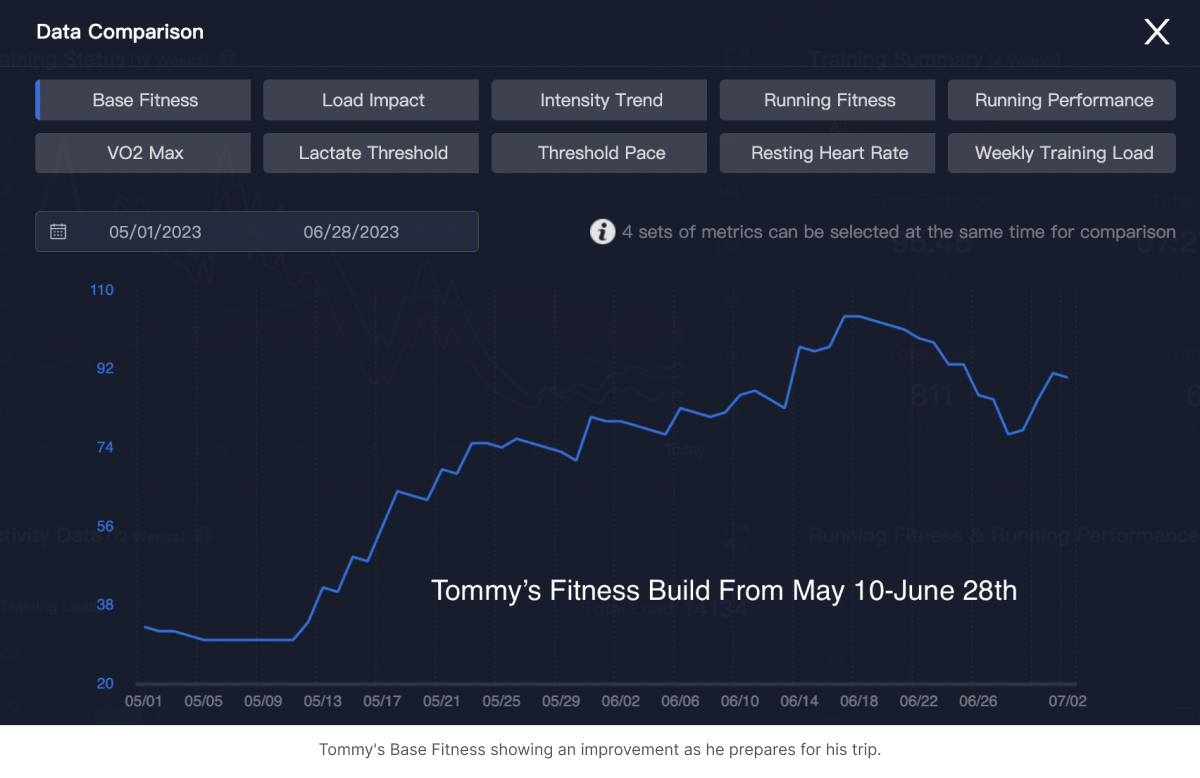
From May 10th-June 28th Tommy put in a big block of training to build endurance and fitness for the journey. Diversifying his workouts across cycling, climbing, hiking, and kayaking, Tommy was able to increase his Base Fitness from 30 to a peak of 104 on June 17th. After allowing himself a 10-day period to recover prior to his start, Tommy was ready to embark on his trans-continental journey feeling fresh with a Base Fitness score of 77.
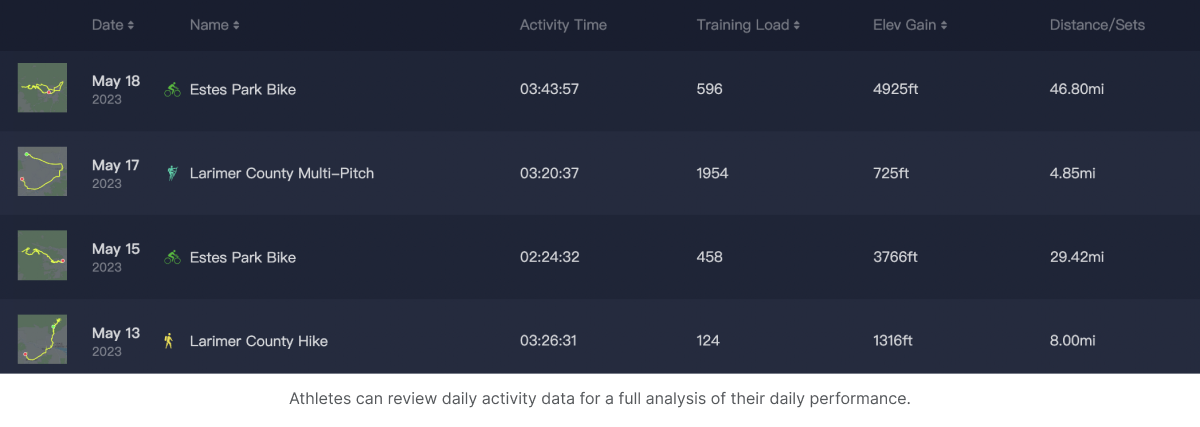
By utilizing his COROS watch for all of his training, Tommy was able to monitor all activities against each other for both fitness improvements, but also knowing when he needed to take a day or two for recovery.
The Journey: Estes Park, Colorado to Prince Rupert, British Columbia
From June 28th to Aug 5th, Tommy and Alex set out to ride from Colorado to just below the southernmost point of Alaska.
Our goal was about 100 miles a day on the bike. For the first 4 days this was hard. But our fitness improved and by the end of the bike ride we were closer to 150 miles some days. This allowed us to add a few sport climbing days. Overall, we rested more than anticipated, but were able to more easily ride long days than we anticipated.
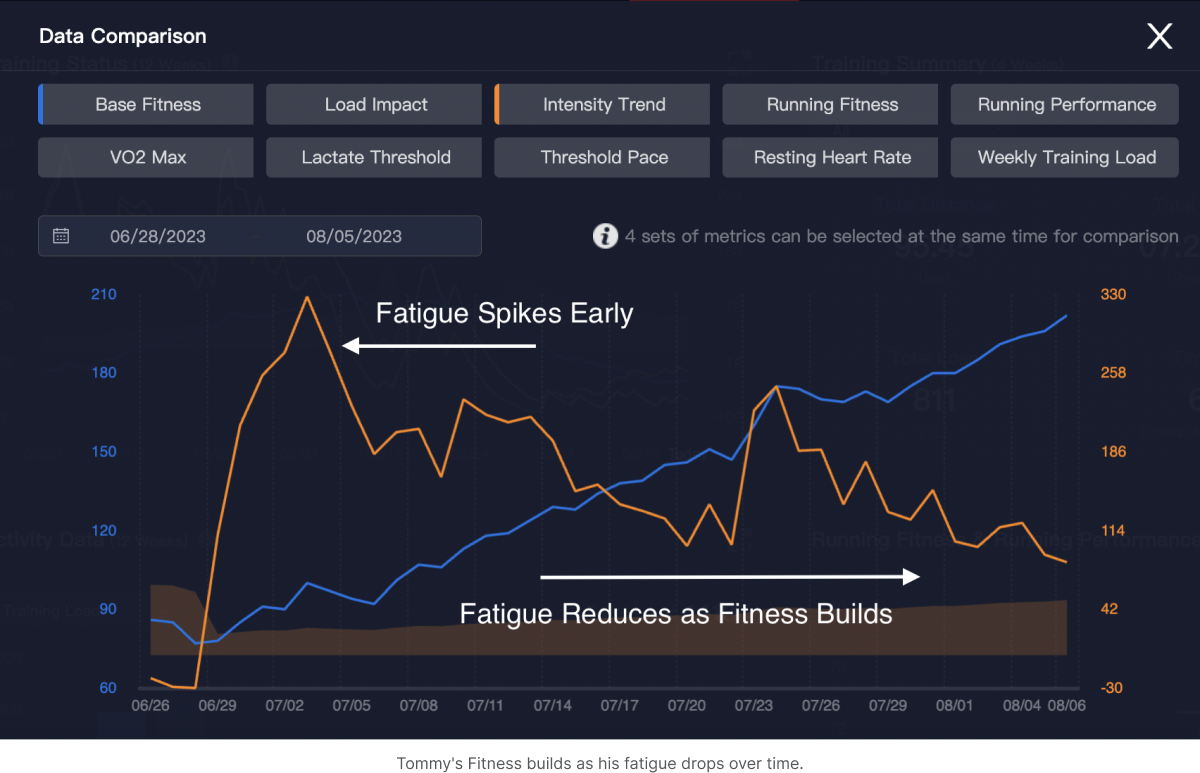
Climbing Along the Way
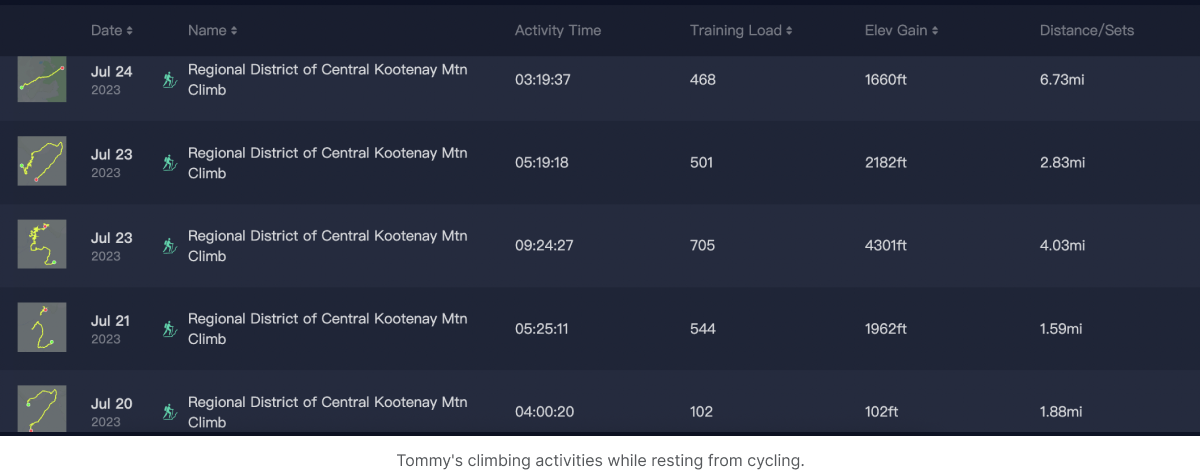
Taking a 5-day stretch to explore the Central Kootenay region of British Columbia, Tommy climbed a total of 3,111 meters with his largest day coming on July 23rd with a combined total of 14+ hours and 1,976m of elevation gain. (View Tommy's post on Instagram)
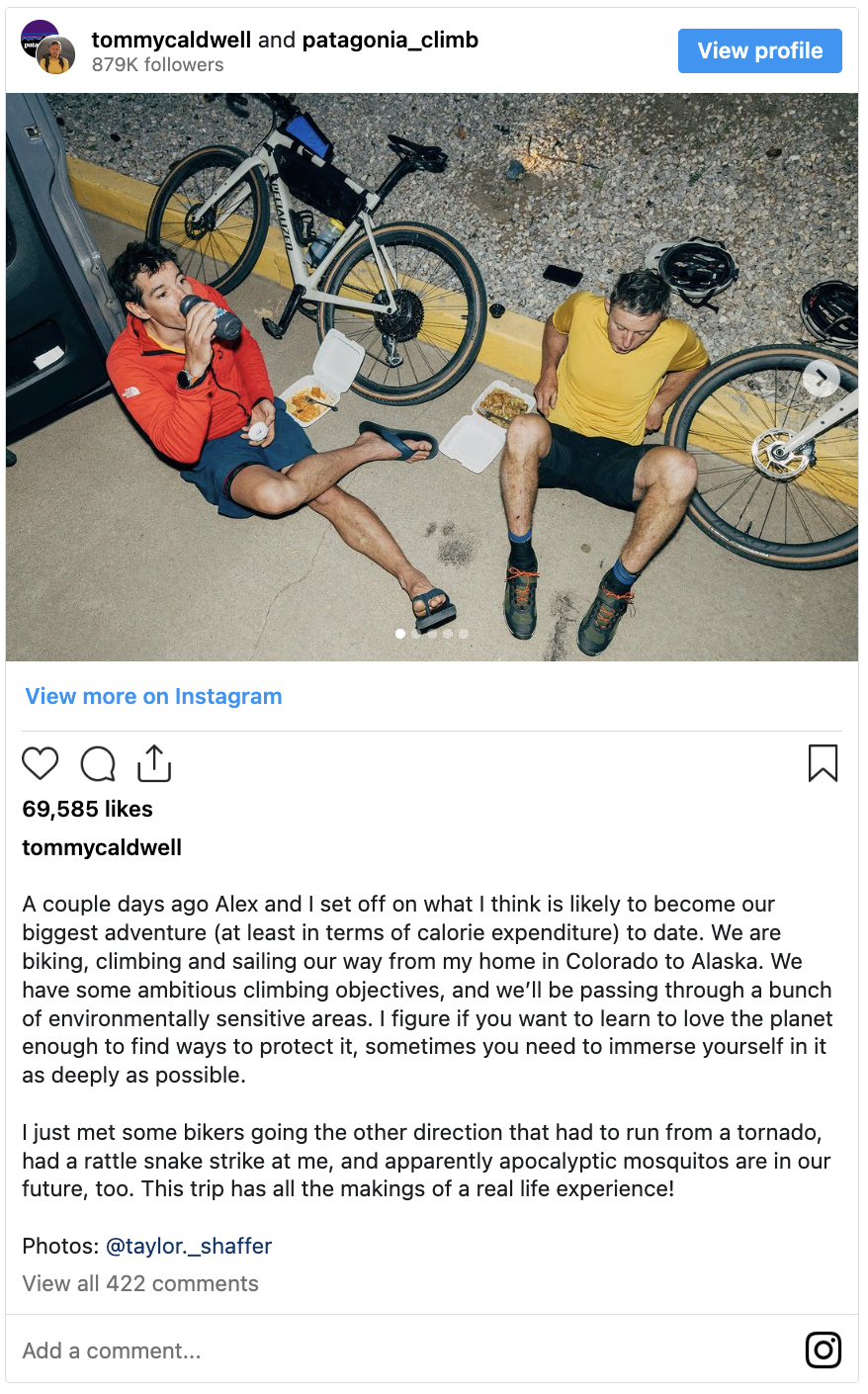
Cycling Stats
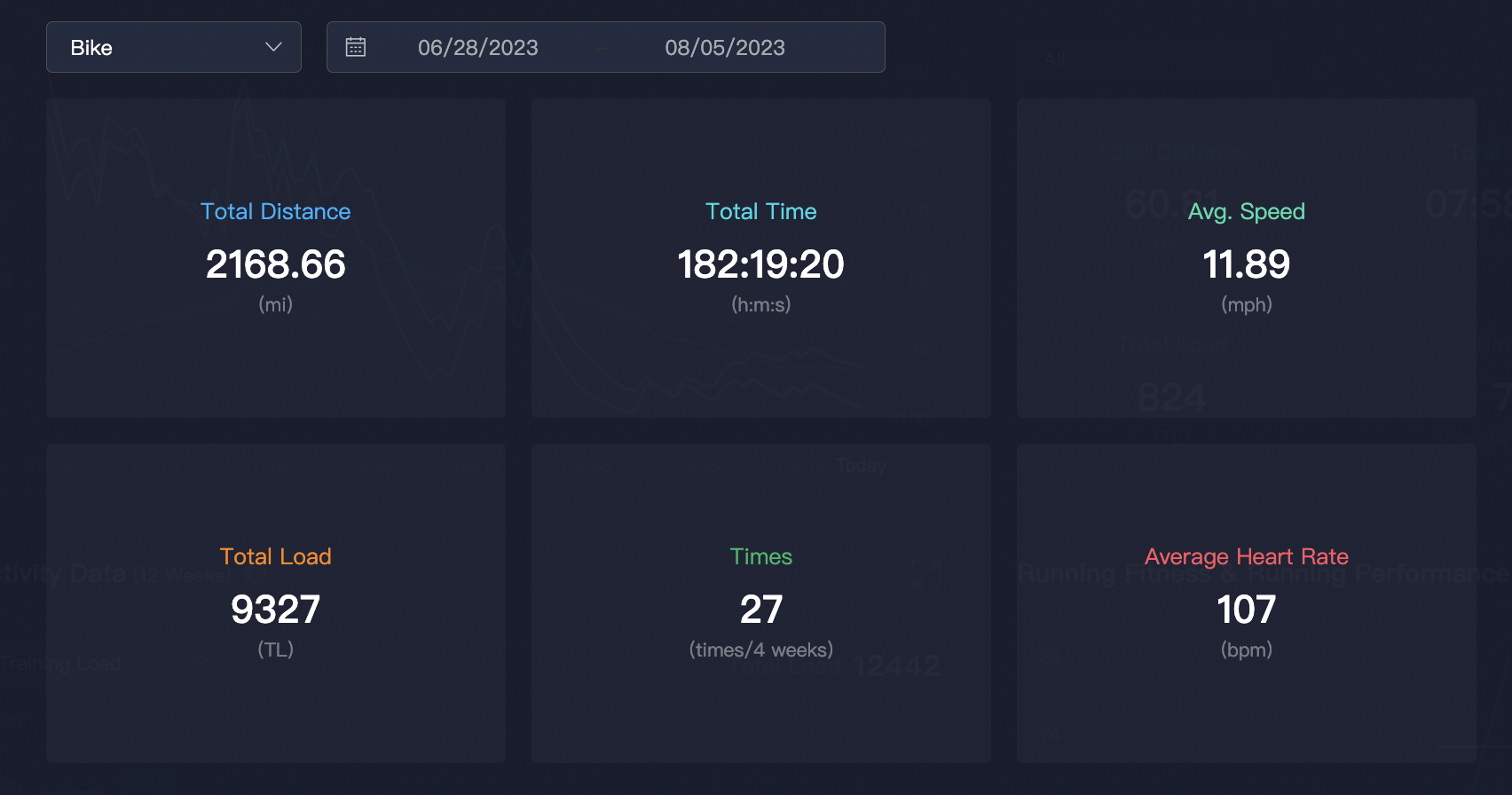
Over the 5+ weeks from Estes Park to Prince Rupert, Tommy logged 2,168.66 miles on his device. Having learned in training that he could continue to ride strong day-after-day if pedaling at a lower intensity, the average heart rate from all of Tommy's rides was 107 bpm. Having tracked a combined 27 rides on his journey, this puts his average ride distance at 80.32 miles.
Largest Single Day Ride
Perhaps a fitting end to the cycling portion of this trip, Tommy's largest day on the bike was his last. Starting the day in Smithers British Columbia, Tommy would spend the next 14 hours and 51 minutes riding 163.87 miles to Prince Rupert on the coast just below the Alaskan border.
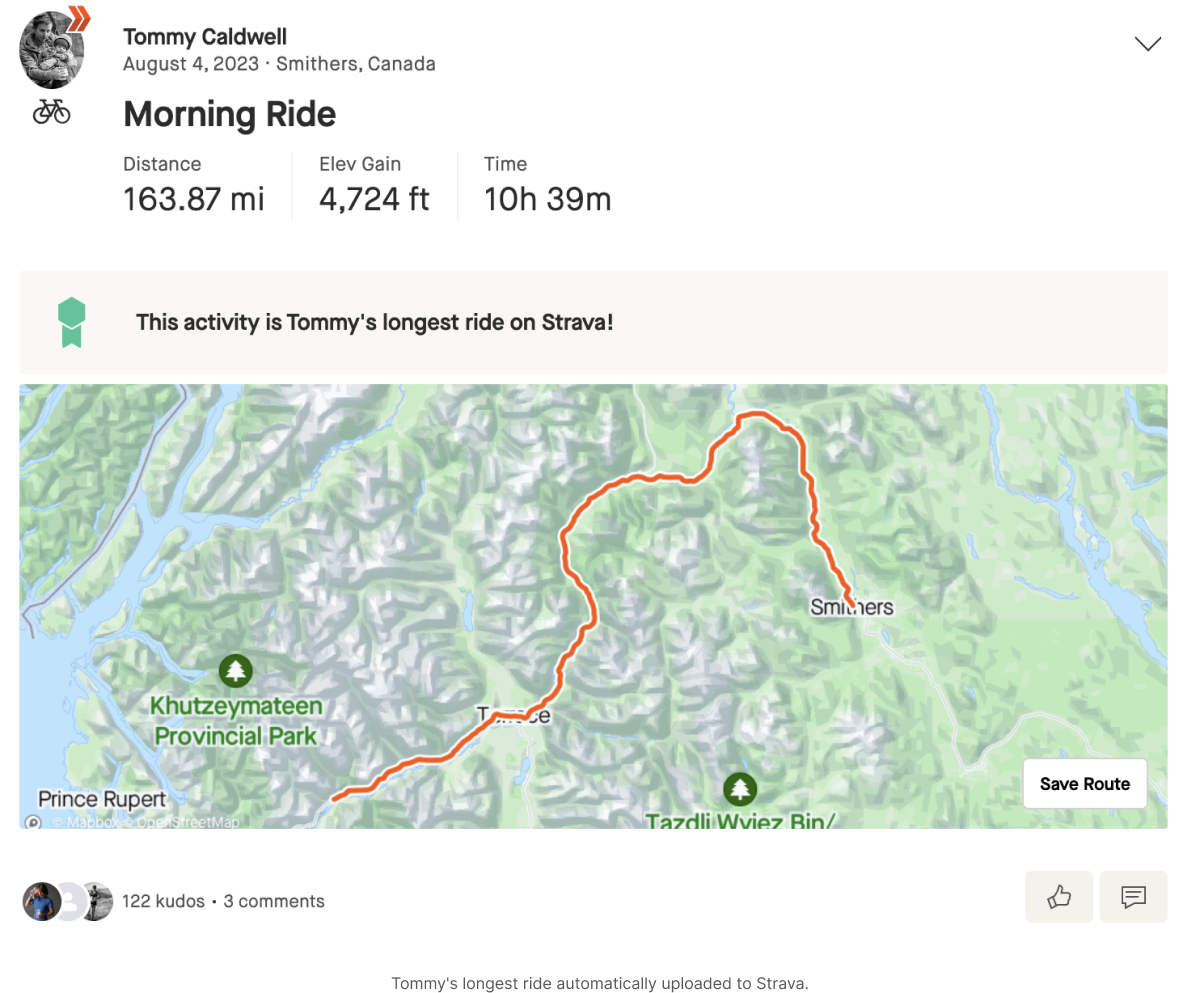
As Tommy did with all prior rides, he wore his COROS Heart Rate Monitor on his bicep for intensity tracking, and then put his VERTIX 2 watch on his handlebars for speed, mid-ride HR analysis and any navigational directions he needed. Having this setup allowed Tommy to stay on track, while also ensuring he didn't over fatigue his body by pushing too hard at any point of the journey.
I used COROS to monitor progress, speed, heart rate, elevation, sleep, HRV and more. There were so many data points that my watch provided that helped me better understand mental vs physical fatigue.

Tommy's Tip for Tracking Activities: "While on the bike I used an arm band heart rate monitor. This not only improved the accuracy of the heart rate reading but also allowed me to mount the watch face to my handlebars as a bike computer. While hiking and sleeping I wore the watch on my wrist, and while climbing I sometimes put the watch in the lid of my pack, but if I was logging pitches, I put the watch on the locking Carabiner and attached it to my harness. I loved the versatility of all the mounting options."
Prince Rupert, BC to Tongass National Park Alaska
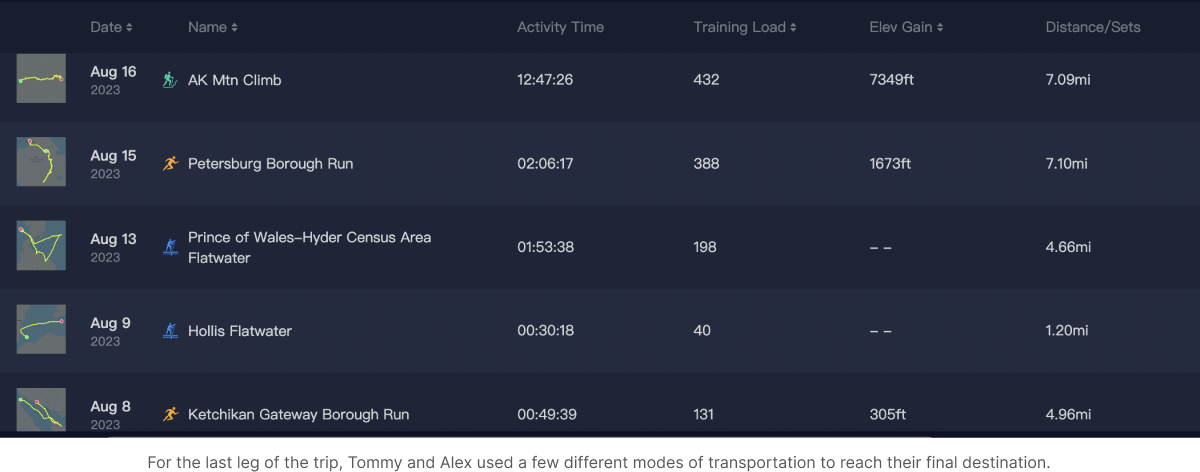
It always takes a while for the impact of big trips like this to really set in. Looking back, I would say that I now believe that if I want to experience big adventure, I don’t need to fly around the world to make it happen. I think traveling long distances by bike is not only possible, but it also better connects you with nature, yourself, your friends. And it greatly expands the magnitude of the adventure overall.
When it comes to training and tracking expeditions, Tommy also noted the lasting power of the VERTIX 2's 140 hour of GPS battery life.
For a big expedition like this the battery life was critical. I often tracked progress for 8-12 hours a day. Even with all that tracking I was able to go three weeks without recharging.
Heading Out on Your Next Adventure
As you head out the door on your next big adventure, be aware of what your body needs, and the planning required to meet all of your expectations. When prepared with the right mindset and equipment, spending time in the great outdoors can be an opportunity to connect with your surroundings, and enjoy the beauty they hold. As Tommy puts a wrap on this last major expedition, we look forward to seeing how this trip continues to inspire him and the audience that followed along. Whether you're aspiring to reach your next goal or aiming to connect more with nature, take a little extra time to appreciate what is right in front of you, and the privilege we have to call this place our home. (View Tommy's post on Instagram)
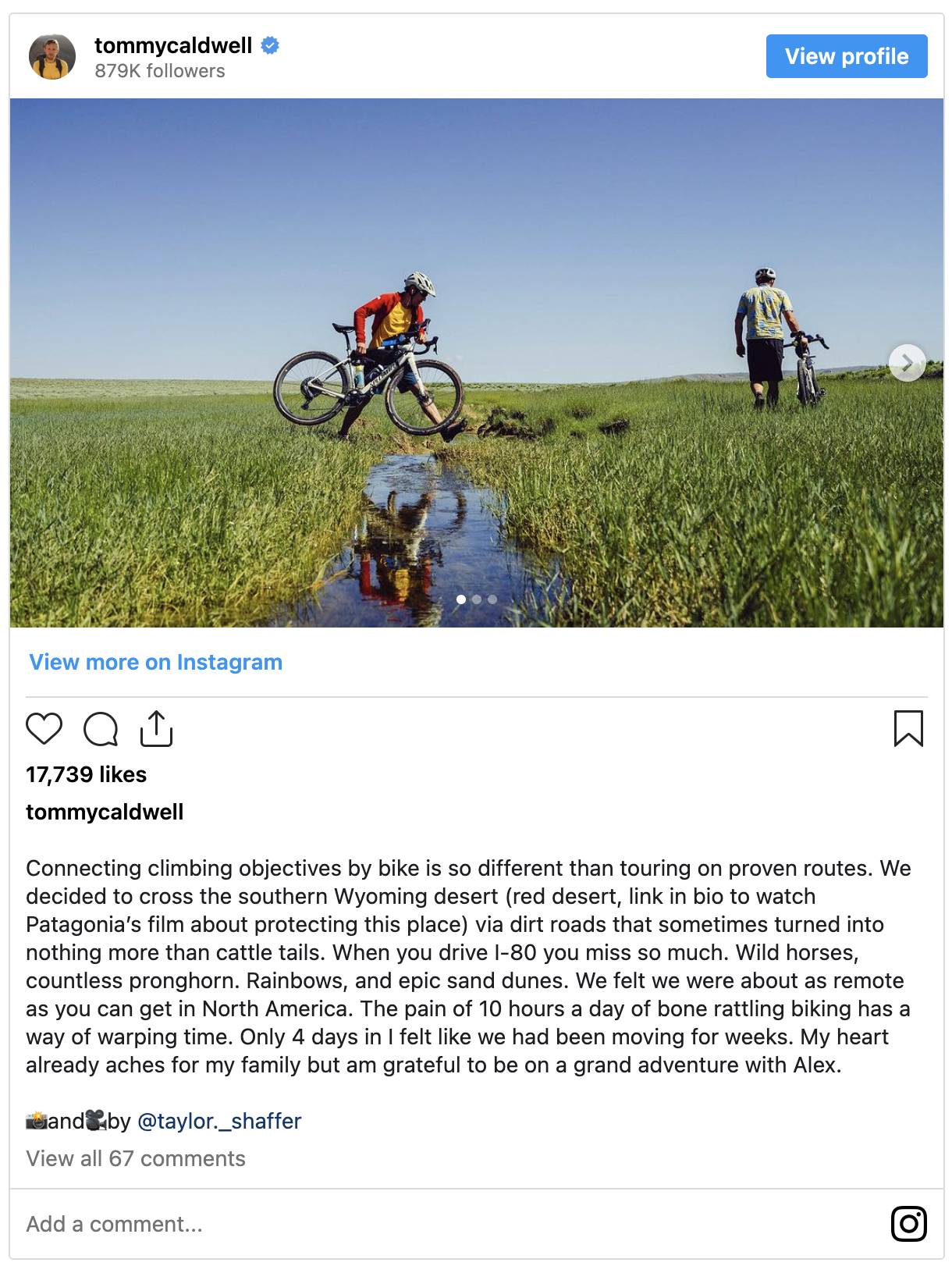

/filters:quality(90)/fit-in/970x750/coros-web-faq/upload/images/db0dfc825580bdd0d5e7b3ac7effd4d1.png)